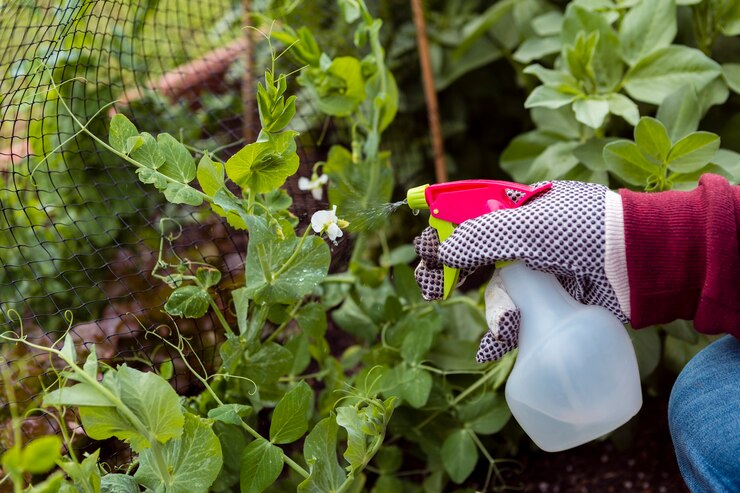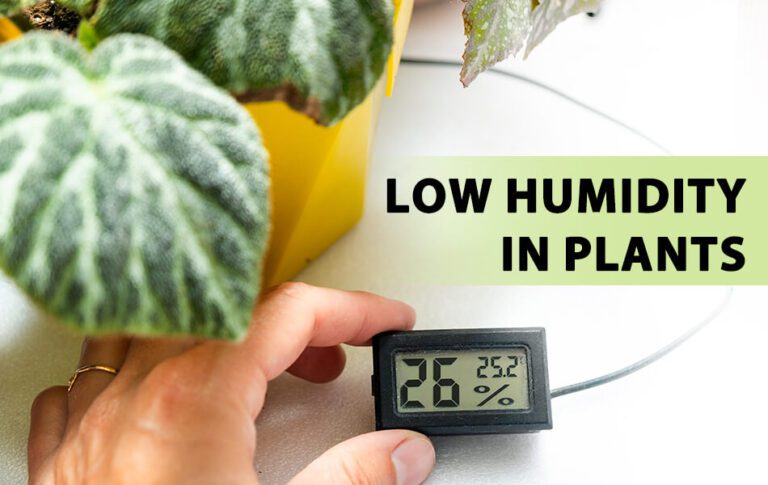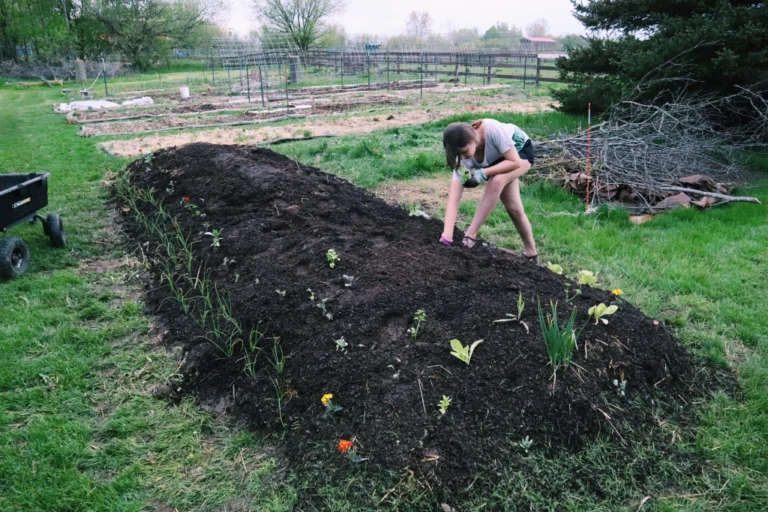Organic Disease Defense with Copper Fungicide
Table of Contents
Understanding the Role of Copper Fungicide in Disease Prevention
Copper fungicide plays a crucial role in disease prevention for plants and crops. With its strong antifungal properties, copper fungicide acts as an effective solution against a wide range of plant diseases. The fungicide works by releasing copper ions that disrupt the disease-causing pathogens at a cellular level, inhibiting their growth and spread.
One of the key benefits of copper fungicide is its versatility. It can be used on various plant types, including fruits, vegetables, ornamentals, and even turfgrass. This makes it a valuable tool in organic gardening and sustainable agriculture practices, where chemical-free disease prevention methods are preferred. Copper fungicide offers an alternative to synthetic chemical treatments, providing gardeners with a natural and environmentally-friendly solution for disease control.
In addition to its effectiveness, another advantage of copper fungicide is its longevity. Once applied, it forms a protective layer on plants, providing durable disease resistance. This protection extends to new growth, ensuring that plants remain safeguarded as they continue to develop. Furthermore, copper fungicide has shown compatibility with other disease prevention methods, making it a valuable component of an overall disease management strategy.
Overall, understanding the role of copper fungicide in disease prevention is essential for gardeners and farmers alike. Its powerful antifungal properties, versatility, and longevity make it a reliable tool in the fight against plant diseases. However, it is important to consider the specific requirements of different plant species and follow the appropriate application techniques to maximize its effectiveness. With proper usage and a comprehensive disease management plan, copper fungicide can help protect crops and promote healthier plants.
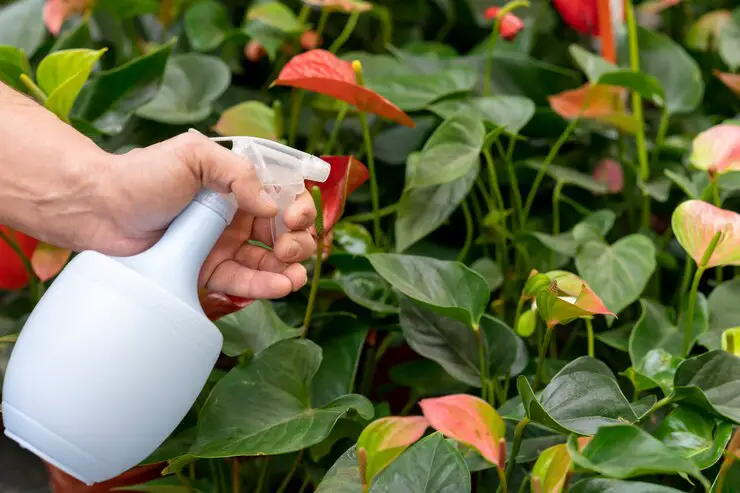
The Science Behind Copper Fungicide’s Disease-Fighting Properties
Copper fungicide is widely recognized for its effective disease-fighting properties in agriculture and horticulture. The science behind its efficacy lies in the natural properties of copper ions, which play a crucial role in inhibiting the growth and spread of various fungal diseases. When applied to plants, copper ions disrupt the cellular processes of fungi, leading to their demise.
One of the key mechanisms by which copper fungicide works is through the process of oxidation. When the copper ions come into contact with fungal spores or hyphae, they initiate a chemical reaction that generates reactive oxygen species. These highly reactive molecules cause significant damage to the fungal cells, interfering with their metabolism and ultimately leading to their death. Additionally, copper ions can disrupt the production of enzymes essential for fungal growth, further compromising the viability of the pathogens.
Studies have shown that copper fungicides are particularly effective against a wide range of plant diseases, including bacterial and fungal infections, such as blights, powdery mildew, downy mildew, and leaf spots. Their broad-spectrum activity and reliable results have made copper fungicides a valuable tool in disease management strategies for both conventional and organic farming systems.
The understanding of copper fungicide’s disease-fighting properties continues to evolve, with ongoing research exploring the molecular mechanisms involved. As scientists delve deeper into the intricate interactions between copper ions and fungal pathogens, new insights are being gained, leading to the development of more targeted formulations and improved application techniques. By harnessing the power of copper, gardeners and farmers are equipped with a proven tool for combatting plant diseases and safeguarding their crops.
Exploring the Benefits of Organic Disease Defense Methods
Organic disease defense methods have gained significant popularity among gardening enthusiasts in recent years. These methods offer a range of benefits that not only contribute to the overall health of plants but also promote sustainable and environmentally friendly practices.
One of the key advantages of organic disease defense methods is their ability to prevent the occurrence of diseases in a natural and chemical-free manner. These methods focus on promoting plant health through the use of organic fertilizers, crop rotation, and companion planting, among others. By creating a favorable environment for plants and encouraging natural defenses, organic disease defense methods help to reduce the susceptibility of plants to diseases, leading to healthier and more robust growth.
Additionally, organic disease defense methods offer long-term benefits by improving the overall soil health. Through the use of organic matter and beneficial microorganisms, these methods enhance the soil’s fertility and structure, which translates into better nutrient availability and water retention for plants. Moreover, a healthier soil ecosystem promotes the growth of beneficial organisms that can help in controlling pests and diseases naturally, further enhancing the effectiveness of disease prevention strategies.
By adopting organic disease defense methods, gardeners can not only protect their plants from diseases but also contribute to a more sustainable and environmentally conscious approach to gardening. These methods align with the principles of organic farming and reduce the reliance on synthetic chemicals, minimizing the potential negative impacts on the environment and human health. Overall, exploring and implementing organic disease defense methods can prove to be a wise choice for gardening enthusiasts seeking to achieve both healthy plants and a greener world.
| Benefits | Explanation |
|---|---|
| Environmentally friendly | Organic disease defense methods typically use natural ingredients that are less harmful to the environment compared to synthetic chemicals. |
| Healthier produce | Organic methods often result in healthier produce as they avoid the use of synthetic pesticides and fertilizers, which may leave residues on fruits and vegetables. |
| Reduced risk of chemical exposure | Organic methods minimize the exposure of farmers, farmworkers, and consumers to potentially harmful chemicals found in synthetic pesticides. |
| Preservation of soil health | Organic practices focus on improving soil health through methods like composting, crop rotation, and cover cropping, which sustain soil fertility and structure. |
| Biodiversity conservation | Organic farming practices encourage biodiversity by avoiding the use of synthetic chemicals that can harm beneficial insects, birds, and other organisms. |
| Sustainable agricultural practices | Organic methods promote long-term sustainability by reducing reliance on non-renewable resources and preserving ecosystem balance. |
| Enhanced water quality | By minimizing chemical runoff into water bodies, organic farming helps maintain water quality and preserves aquatic ecosystems. |
| Community well-being | Organic farming often supports local communities by promoting small-scale agriculture, fostering local economies, and preserving traditional farming knowledge. |
| Reduced resistance in pests and pathogens | Organic methods encourage diverse ecosystems that are less prone to pest and pathogen outbreaks, reducing the likelihood of resistance development. |
Common Plant Diseases and How Copper Fungicide Can Help
Common Plant Diseases and How Copper Fungicide Can Help
Plant diseases can be a significant challenge for gardeners and farmers alike. From powdery mildew to blight, these diseases can wreak havoc on crops, leading to decreased yield and quality. Fortunately, copper fungicide offers a solution to combat these plant diseases effectively.
One common plant disease that copper fungicide can help address is downy mildew. This fungal disease affects a wide range of plants, including grapes, cucumbers, and spinach, causing yellow or brown patches on leaves and stunting growth. Copper fungicide works by inhibiting the growth and spread of downy mildew spores, preventing further damage to plants. Its ability to effectively control this disease has made it a trusted choice for many gardeners and farmers.
Another plant disease where copper fungicide proves beneficial is blight. Blight, caused by various fungal pathogens, affects tomatoes, potatoes, and other solanaceous plants, leading to wilting, discoloration, and ultimately, plant death. Copper fungicide acts as a protective barrier, preventing blight spores from infecting plants and reducing the severity of the disease. By incorporating copper fungicide into a comprehensive disease management strategy, gardeners can significantly improve the health and productivity of their plants.
Choosing the Right Copper Fungicide for Your Organic Garden
Choosing the right copper fungicide for your organic garden is crucial in ensuring effective disease management. There are several factors to consider when selecting the most suitable product for your plants.
First and foremost, it is important to understand the specific disease or diseases you are targeting. Different copper fungicides are formulated to combat specific plant diseases, so identifying the pathogens causing problems in your garden will guide you in choosing the appropriate product. Conducting a thorough assessment of your plants and consulting with local agricultural experts can help you determine the specific diseases affecting your crops.
Additionally, consider the formulation and mode of action of the copper fungicide. Copper-based products are available in various forms such as liquid concentrates, wettable powders, and dusts. These formulations differ in their application methods, efficacy, and persistence. Some products are designed for preventive purposes, while others are more effective in treating existing infections. Understanding the mode of action will assist you in selecting the most suitable formulation for your garden.
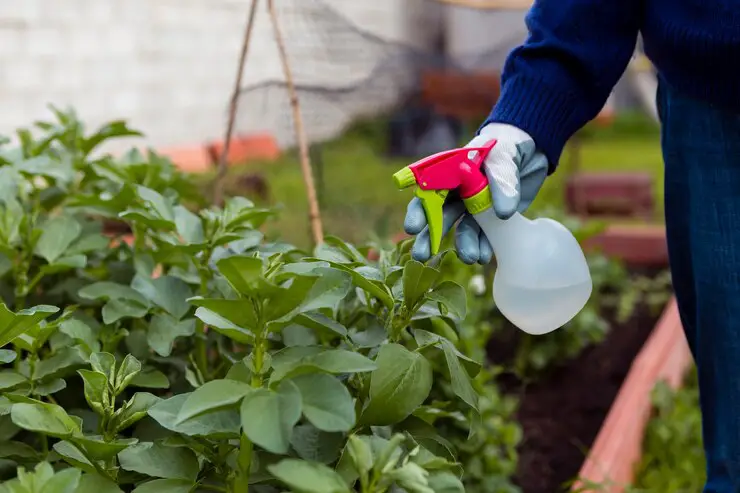
Application Techniques: Maximizing the Effectiveness of Copper Fungicide
To maximize the effectiveness of copper fungicide application, it is crucial to follow proper techniques and guidelines. Firstly, timing is essential when it comes to applying copper fungicide. It is recommended to apply the fungicide before the onset of disease symptoms or during the early stages of disease development. This proactive approach helps to prevent the spread and severity of the disease.
Another important consideration is the coverage of the fungicide. It is crucial to ensure thorough coverage of all plant surfaces, including the leaves, stems, and fruits. Pay close attention to the undersides of leaves where diseases often thrive. Use a sprayer with a fine nozzle to achieve better coverage, and ensure that the fungicide is evenly distributed.
Furthermore, it is advisable to apply copper fungicide during periods of calm weather. Avoid applying the fungicide when rain or strong winds are expected, as it may lead to ineffective distribution or runoff, reducing its efficacy. Aim for a dry period where the fungicide can adhere to the plant surfaces and have ample time to work.
Finally, it is important to maintain a consistent application schedule according to the product label instructions. This will vary depending on the specific brand and type of copper fungicide being used. Following the recommended frequency of application ensures that the fungicide remains effective and provides continuous protection against diseases.
By following these application techniques, gardeners can maximize the effectiveness of copper fungicide and promote healthier and disease-resistant plants. Remember to always consult the fungicide product label for specific instructions and recommendations for your specific plants and gardening conditions.
Best Practices for Organic Disease Prevention with Copper Fungicide
To effectively prevent diseases in your organic garden, it is important to follow best practices when using copper fungicide. Here are a few key practices to keep in mind:
1. Timing is crucial: Apply copper fungicide preventively, before disease symptoms appear. This will help protect your plants from common fungal infections such as powdery mildew, black spot, and blight. Follow the specific instructions provided by the product manufacturer for the optimal timing of application.
2. Dosage and concentration: Ensure that you follow the recommended dosage and concentration of copper fungicide as indicated on the product label. Using too little may be ineffective, whereas using too much can lead to copper buildup in soils, potentially affecting plant health and soil microorganisms.
3. Proper application: Apply copper fungicide evenly and thoroughly to the foliage and stems of plants. Be cautious not to overspray or allow the product to accumulate excessively on leaves, as this can cause phytotoxicity. Additionally, avoid applying copper fungicide during periods of high humidity or rainfall, as excessive moisture can reduce its effectiveness.
By adhering to these best practices, you can maximize the efficacy of copper fungicide and contribute to a healthy and disease-free organic garden. Remember, however, that copper fungicide should be considered as part of an integrated disease management strategy, along with other preventive measures like good plant hygiene, proper spacing and ventilation, regular inspections, and disease-resistant cultivars.
| Practice | Description |
|---|---|
| Timing | Apply copper fungicide preventively before disease outbreaks occur. |
| Weather Conditions | Apply during dry weather conditions to ensure optimal adherence and effectiveness of the fungicide. |
| Dosage | Follow manufacturer’s instructions regarding the amount of copper fungicide to use per gallon of water. |
| Coverage | Ensure thorough coverage of plant surfaces, including both upper and lower leaf surfaces. |
| Frequency | Apply copper fungicide at regular intervals as recommended, typically every 7-14 days during the growing season. |
| Alternate Products | Rotate with other organic fungicides to prevent the development of resistance in pathogens. |
| Application Technique | Use proper application techniques such as spraying early in the morning or late in the afternoon to minimize the risk of leaf burn. |
| Clean Equipment | Clean spraying equipment thoroughly after each use to prevent cross-contamination and buildup of residues. |
| Record Keeping | Maintain records of applications, including dates, dosages, and weather conditions, for future reference. |
| Monitoring | Regularly inspect plants for signs of disease and adjust fungicide application frequency as needed. |
| Safety Measures | Wear appropriate protective gear such as gloves, goggles, and masks when handling and applying fungicides. |
Addressing Concerns: Is Copper Fungicide Safe for Organic Gardening?
Concerns about the safety of copper fungicide for organic gardening are understandable, as organic gardeners prioritize the use of natural and non-toxic substances. However, when used properly, copper fungicide can be a safe and effective tool for disease management in organic gardens.
The safety of copper fungicide lies in its proper application and adherence to recommended guidelines. It is important to note that copper is a naturally occurring element in the environment and is even classified as an essential microelement for plants. When used in fungicides, copper compounds are formulated to minimize negative impacts on the environment and human health.
According to studies conducted by reputable agricultural research institutions and regulatory bodies, copper fungicides have a low risk of toxicity when used as directed. While copper can accumulate in soil over time, the levels typically remain below thresholds of concern. Furthermore, copper fungicides have been approved and certified for organic use by organizations such as the Organic Materials Review Institute (OMRI) and the United States Department of Agriculture (USDA), affirming their compatibility with organic gardening practices.
As with any pesticide, it is crucial to follow label instructions and avoid excessive or improper use. Over-application of copper fungicide can lead to toxic buildup in the soil, potentially harming beneficial organisms and degrading soil health. Like other preventive measures, copper fungicide should be employed only when necessary and as part of an integrated approach to disease management in organic gardening.
In the next section, we will discuss tips and best practices for proper storage and handling of copper fungicide, ensuring its optimal effectiveness while minimizing any potential risks.
Tips for Proper Copper Fungicide Storage and Handling
Proper storage and handling of copper fungicide is essential to maintain its effectiveness and ensure the safety of both the user and the environment. When it comes to storage, it is important to keep copper fungicide in its original, tightly sealed container. This will protect the fungicide from exposure to moisture, heat, and sunlight, which can degrade its quality over time. Additionally, it is recommended to store the fungicide in a cool, dry place away from children, pets, and food products to prevent accidental ingestion or contamination.
When handling copper fungicide, it is crucial to wear appropriate personal protective equipment (PPE) to minimize any potential risks. This includes wearing gloves, protective eyewear, and a mask to prevent direct skin contact, eye irritation, or inhalation of the product. It is also important to avoid eating, drinking, or smoking while handling the fungicide to prevent accidental ingestion.
Furthermore, it is recommended to follow the manufacturer’s instructions regarding the mixing and dilution ratios for the fungicide. Overdosing can not only harm the plants but also have a negative impact on the environment. On the other hand, under-dosing may result in ineffective disease prevention. Therefore, it is crucial to follow the recommended dosage and application methods provided by the manufacturer.
By following these tips for proper copper fungicide storage and handling, gardening enthusiasts can ensure the longevity and effectiveness of the product while maintaining safety for themselves and the environment.
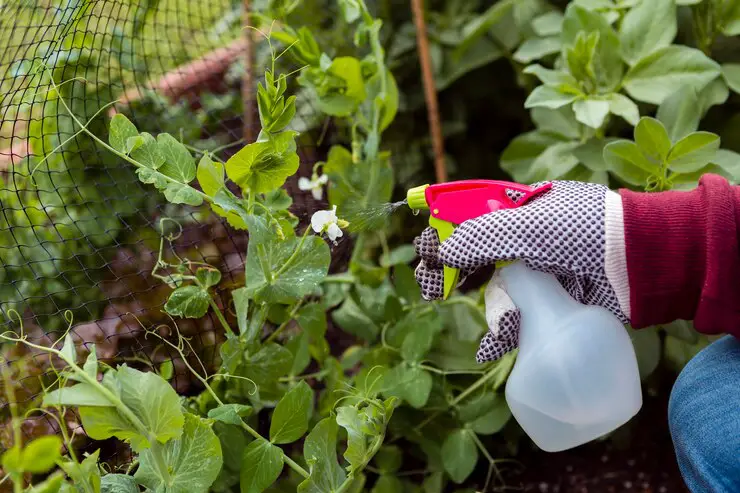
Integrating Copper Fungicide into an Overall Organic Disease Management Strategy
Copper fungicide can be a valuable tool in an overall organic disease management strategy. The key to effective integration lies in understanding its limitations and utilizing it in conjunction with other preventative measures. By following a few best practices, gardeners can maximize the benefits of copper fungicide while minimizing potential risks.
One important aspect of integrating copper fungicide into an overall disease management strategy is timing. It is crucial to apply the fungicide at the first sign of disease or as a preventive measure before the disease appears. This ensures that the copper particles have enough time to establish a protective barrier on the plants. Regular monitoring of the garden for signs of disease is essential in order to catch any issues early on and take appropriate action.
In addition to timing, proper application techniques are also vital. It is important to evenly distribute the fungicide, ensuring that it reaches all parts of the plant, including the undersides of leaves and the stems. This can be achieved through the use of a pump sprayer or other suitable application methods. Following the recommended dosage and frequency specified by the manufacturer is crucial to avoid overuse, as excess copper can be harmful to plants and ecosystems.
Integrating copper fungicide into an overall organic disease management strategy requires a balanced approach. While copper fungicide can be effective in controlling certain plant diseases, it is not a comprehensive solution. It should be used in conjunction with other preventative measures, such as crop rotation, soil health management, proper plant spacing, and good hygiene practices. This multi-faceted approach helps to create an environment that is less conducive to the development and spread of diseases. By adopting an integrated strategy, gardeners can effectively manage diseases while minimizing the reliance on copper fungicide alone.
Understanding the Environmental Impact of Copper Fungicide Usage
Copper fungicide has long been recognized as an effective tool in the battle against plant diseases. However, it is important to consider the potential environmental impact of its usage. When copper fungicide is applied to plants, it can eventually make its way into the soil. Over time, copper can accumulate in the soil and reach levels that may be harmful to beneficial organisms such as earthworms and certain microorganisms.
In addition, copper fungicide can also pose a risk to aquatic ecosystems if it is washed off plants during rainfall or irrigation. Copper can be toxic to fish and other aquatic organisms at high concentrations, and it can persist in water bodies for an extended period of time. This highlights the importance of using copper fungicide judiciously and following proper application techniques to minimize its environmental impact. By understanding the potential risks associated with copper fungicide usage, gardeners can make informed decisions to protect both their plants and the environment.
Copper Fungicide Resistance: How to Prevent and Manage it
Copper fungicide resistance is a growing concern for organic farmers and gardeners. Over time, some plant pathogens have developed the ability to tolerate or even thrive in the presence of copper fungicides. This resistance can render these products ineffective in controlling disease outbreaks, posing a challenge to organic disease management strategies.
Preventing and managing copper fungicide resistance requires a proactive and integrated approach. One key aspect is the rotation of different types of fungicides with varying modes of action. By alternating between copper-based fungicides and other effective organic fungicides, the risk of resistance development can be reduced. It is also important to carefully follow the recommended application rates and schedules for copper fungicides. Overuse or misuse can contribute to resistance development, so adhering to label instructions is crucial. Additionally, maintaining a healthy and diverse garden ecosystem can help prevent the buildup of pathogen populations and reduce the reliance on fungicides altogether. This can be achieved through practices such as crop rotation, fostering beneficial insects, and improving soil health.
Case Studies: Success Stories of Organic Disease Defense with Copper Fungicide
Case Study 1: Tomato Blight Control
In a study conducted by the Department of Plant Pathology at a renowned agricultural university, copper fungicide was found to be highly effective in controlling tomato blight, a devastating fungal disease that affects tomato plants worldwide. The study involved a group of tomato plants grown in a controlled environment, with half of the plants treated with copper fungicide and the other half left untreated as a control group.
The results were remarkable, with the copper-treated plants showing significantly reduced symptoms of blight compared to the untreated ones. Not only did the copper fungicide control the spread of the disease, but it also helped in preventing the recurrence of blight in subsequent growing seasons. These findings highlight the success of copper fungicide as an organic disease defense method for tomato blight control.
Case Study 2: Grapevine Downy Mildew Management
A vineyard in a prominent wine-making region faced recurring outbreaks of downy mildew, a fungal disease that can devastate grapevine crops. Seeking an organic solution, the vineyard turned to copper fungicide as part of their disease management strategy. They employed a regular spraying schedule, targeting the foliage and grape clusters, from bud break until the onset of fruit ripening.
Over a period of three consecutive growing seasons, the vineyard observed a significant reduction in downy mildew incidence and severity. This success was attributed to the unique properties of copper fungicide, which effectively controlled the pathogen’s growth and prevented spore germination. The vineyard’s commitment to organic disease control, combined with the strategic application of copper fungicide, resulted in healthier grapevines and improved wine quality.
These case studies illustrate the effectiveness of copper fungicide as an essential tool in the organic defense against plant diseases. By implementing proper application techniques and incorporating copper fungicide into an overall disease management plan, gardeners and farmers can expect successful outcomes in combating fungal infections and safeguarding their crops.

Exploring Alternative Organic Disease Defense Methods
As gardening enthusiasts, we are always looking for new and innovative methods to defend our plants against diseases while staying true to organic principles. While copper fungicide has proven to be an effective solution, it is worth exploring alternative organic disease defense methods to broaden our options.
One alternative method gaining attention is the use of essential oils. Certain essential oils have natural antimicrobial properties that can help combat plant diseases. For example, studies have shown that oils such as cinnamon and clove can inhibit the growth of pathogens in plants, offering a potential organic alternative to traditional fungicides. Additionally, essential oils are known for their pleasant aroma, making them a favorable option for those looking to avoid strong chemical scents in their gardens.
Another alternative method worth considering is the use of compost teas. Compost teas are created by steeping compost in water to extract beneficial microbes and nutrients. When applied as a foliar spray or soil drench, compost teas can help improve plant health and suppress diseases by promoting the growth of beneficial microorganisms. This organic approach not only enhances the overall vitality of plants but also enhances the soil ecosystem, creating a harmonious environment for disease prevention.
While copper fungicide remains a reliable choice, exploring alternative organic disease defense methods can offer new possibilities for gardeners seeking diverse solutions. By harnessing the power of essential oils or incorporating compost teas into our gardening practices, we can expand our arsenal of organic disease prevention techniques and cultivate healthier, more resilient plants. Together, let us embrace innovation and continue to explore the vast realm of organic gardening.
The Future of Organic Disease Defense: Innovations and Research
The future of organic disease defense in gardening holds great promise as researchers and innovators continue to explore new methods and technologies. One area of focus is the development of advanced biostimulants that can enhance plants’ natural defense mechanisms against diseases. These biostimulants work by stimulating the plant’s immune response, improving its resistance to pathogens and reducing the need for chemical treatments.
Another exciting innovation is the use of beneficial microbes as biocontrol agents. These microscopic organisms, such as bacteria and fungi, can colonize the roots or leaves of plants and outcompete harmful pathogens for resources. They are known to release compounds that inhibit the growth of diseases, providing an environmentally friendly and sustainable solution for organic disease defense.
In addition to these innovations, ongoing research is also exploring the genetic modification of plants for disease resistance. By introducing specific genes into crops, scientists aim to enhance their ability to fend off diseases naturally. This approach, known as genetic engineering or biotechnology, has shown promising results in improving disease resistance in various crops.
As we delve further into the future, it is essential to acknowledge that these innovative approaches should always align with sustainable and environmentally friendly practices. With organic gardening gaining popularity, it is crucial to develop disease defense methods that are in harmony with nature’s balance. Furthermore, comprehensive studies on the long-term effects and safety of these innovations are imperative to ensure their suitability for organic gardening practices. By striking a balance between innovation, sustainability, and safety, we can pave the way for a future where organic disease defense is both effective and environmentally responsible.
What is the role of copper fungicide in disease prevention?
Copper fungicide plays a crucial role in preventing diseases by inhibiting the growth and spread of fungal pathogens on plants.
How do copper fungicides fight against diseases?
Copper fungicides work by releasing copper ions that disrupt the metabolism and cell walls of fungal pathogens, thereby preventing their growth and replication.
What are the benefits of using organic disease defense methods?
Organic disease defense methods offer several benefits, including the absence of harmful chemicals, reduced environmental impact, and the promotion of overall plant and soil health.
Can copper fungicide help with common plant diseases?
Yes, copper fungicide is effective against various common plant diseases such as powdery mildew, downy mildew, blight, and leaf spot.
How do I choose the right copper fungicide for my organic garden?
When selecting a copper fungicide, consider factors such as the specific disease you are targeting, the formulation of the fungicide, and any specific requirements or restrictions for organic gardening.
What are the best application techniques to maximize the effectiveness of copper fungicide?
To maximize effectiveness, it is important to apply copper fungicide evenly and thoroughly, ensuring complete coverage of all plant surfaces. Follow the product instructions for application rates and timing.
What are the best practices for organic disease prevention with copper fungicide?
Some best practices include maintaining good plant hygiene, practicing crop rotation, monitoring plants regularly for early signs of disease, and using copper fungicide as a preventive measure.
Is copper fungicide safe for organic gardening?
Yes, copper fungicides approved for organic gardening are considered safe when used according to label instructions. However, it is important to follow proper handling and storage guidelines to minimize risks.
How should I store and handle copper fungicide properly?
Copper fungicide should be stored in a cool, dry place away from children, pets, and food. It is essential to follow the specific storage instructions provided by the manufacturer.
How can I integrate copper fungicide into an overall organic disease management strategy?
Copper fungicide can be integrated by combining it with other disease prevention methods such as cultural practices, biological controls, and resistant plant varieties for a more comprehensive approach to disease management.
What is the environmental impact of copper fungicide usage?
Copper fungicide can have a potential environmental impact if used improperly or in excessive amounts. It may accumulate in soil and water, affecting aquatic organisms. Proper application and following guidelines can minimize this impact.
How can I prevent and manage copper fungicide resistance?
To prevent resistance, it is advisable to alternate and rotate different fungicides with different modes of action, follow recommended application rates, and avoid excessive and unnecessary use of copper fungicide.
Are there any success stories of organic disease defense with copper fungicide?
Yes, there have been numerous success stories where organic gardeners and farmers have effectively controlled and prevented diseases using copper fungicide. These case studies demonstrate the efficacy of copper fungicide in organic disease defense.
What are some alternative organic disease defense methods?
Some alternative organic disease defense methods include the use of biocontrol agents, such as beneficial bacteria and fungi, cultural practices like proper pruning and spacing, and the use of resistant plant varieties.
What does the future hold for innovations and research in organic disease defense?
The future of organic disease defense holds promising advancements in the development of new organic fungicides, improved application techniques, and a deeper understanding of plant-pathogen interactions for effective disease prevention.

Ankit Garg is a seasoned writer at South El Monte Hydroponics, blending his passion for agriculture with a penchant for storytelling. With a degree in Agricultural Sciences from a prestigious institution, Ankit’s expertise lies in hydroponics, sustainable farming, and innovative cultivation techniques. His keen interest in exploring the intersection of technology and agriculture has led him to delve deep into the realm of hydroponic farming, where he thrives in uncovering the latest advancements and sharing insights through his engaging prose. Ankit’s dedication to promoting eco-friendly and efficient farming practices through his writing has earned him recognition within the agricultural community and beyond.

